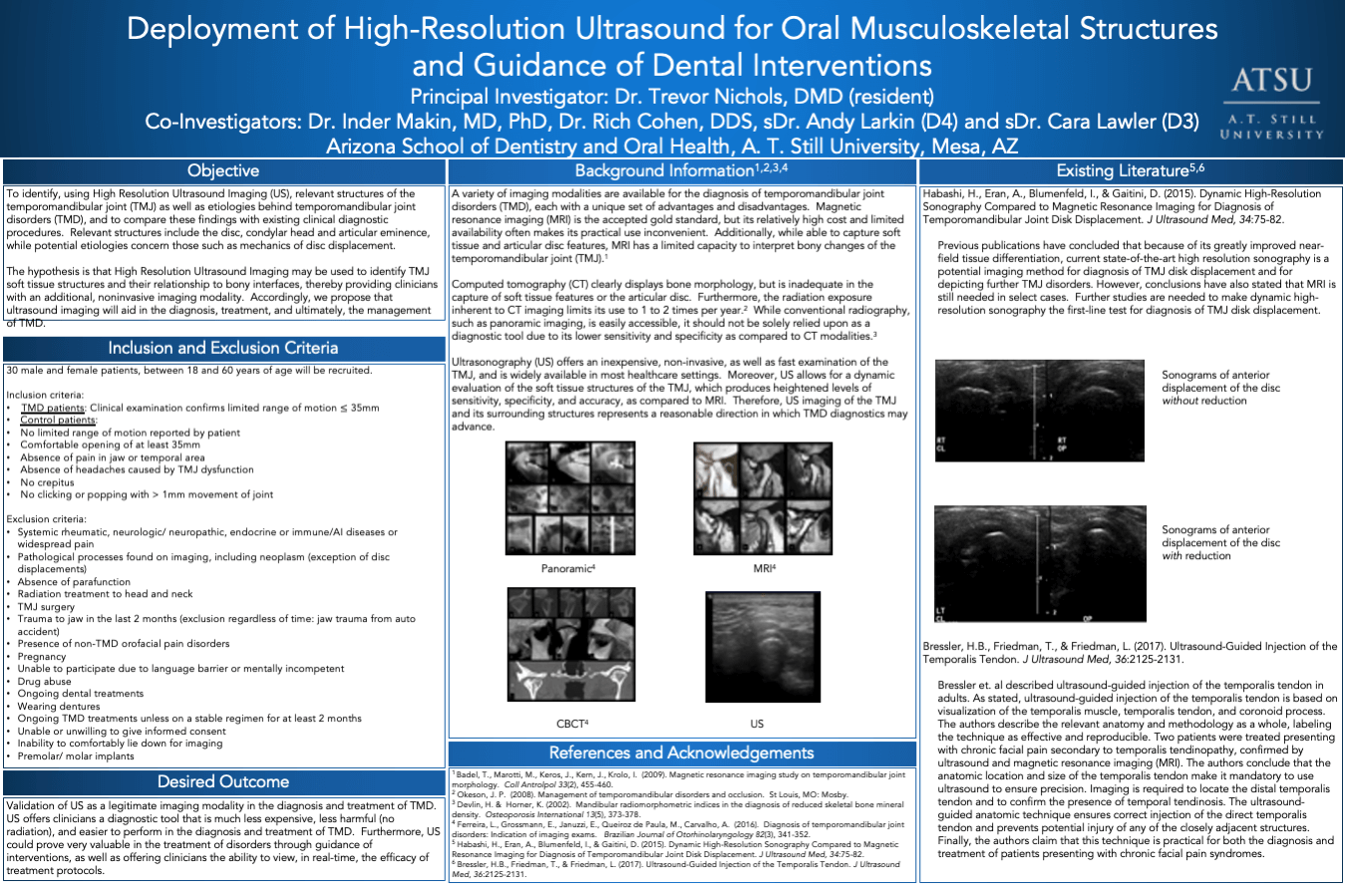Deployment of High-Resolution Ultrasound for Oral Musculoskeletal Structures and Guidance of Dental Interventions
Contributors:
Dr. Trevor Nichols, DMD
Dr. Inder Makin, MD, PhD
Dr. Rich Cohen, DDS
sDr. Andy Larkin (D4)
sDr. Cara Lawler (D3
Dr. Trevor Nichols, DMD
Dr. Inder Makin, MD, PhD
Dr. Rich Cohen, DDS
sDr. Andy Larkin (D4)
sDr. Cara Lawler (D3
Participating Organizations:
Arizona School of Dentistry and Oral Health
Arizona School of Dentistry and Oral Health
Objective
To identify, using High Resolution Ultrasound Imaging (US), relevant structures of the temporomandibular joint (TMJ) as well as etiologies behind temporomandibular joint disorders (TMD), and to compare these findings with existing clinical diagnostic procedures. Relevant structures include the disc, condylar head and articular eminence, while potential etiologies concern those such as mechanics of disc displacement. The hypothesis is that High Resolution Ultrasound Imaging may be used to identify TMJ soft tissue structures and their relationship to bony interfaces, thereby providing clinicians with an additional, noninvasive imaging modality. Accordingly, we propose that ultrasound imaging will aid in the diagnosis, treatment, and ultimately, the management of TMD.
To identify, using High Resolution Ultrasound Imaging (US), relevant structures of the temporomandibular joint (TMJ) as well as etiologies behind temporomandibular joint disorders (TMD), and to compare these findings with existing clinical diagnostic procedures. Relevant structures include the disc, condylar head and articular eminence, while potential etiologies concern those such as mechanics of disc displacement. The hypothesis is that High Resolution Ultrasound Imaging may be used to identify TMJ soft tissue structures and their relationship to bony interfaces, thereby providing clinicians with an additional, noninvasive imaging modality. Accordingly, we propose that ultrasound imaging will aid in the diagnosis, treatment, and ultimately, the management of TMD.
